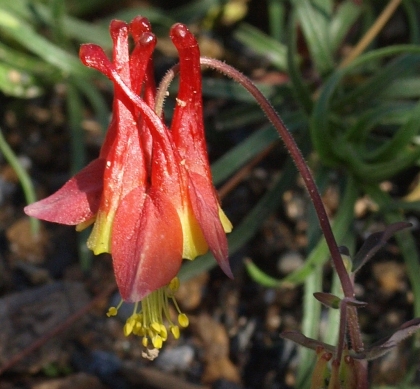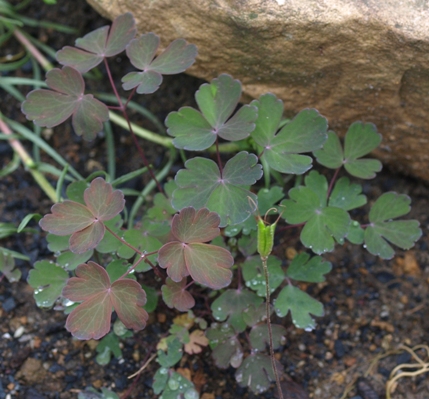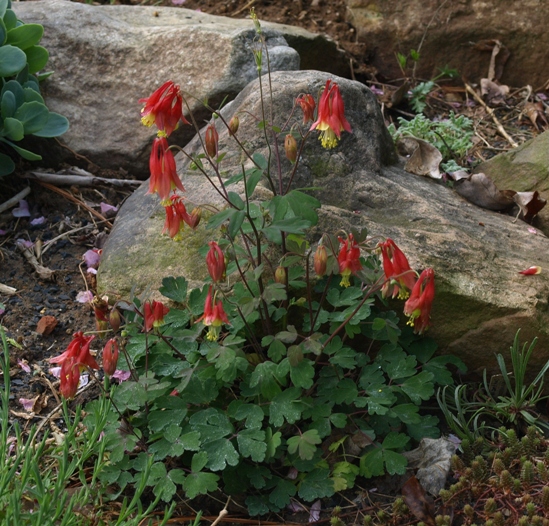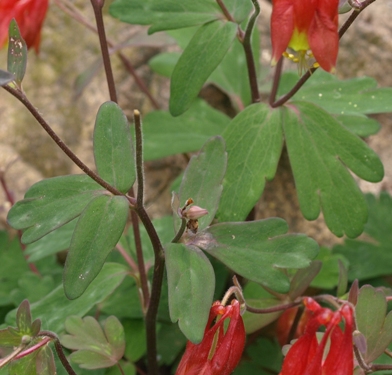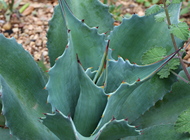 |
Aquilegia shockleyi |
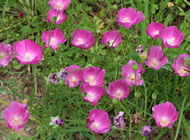 |
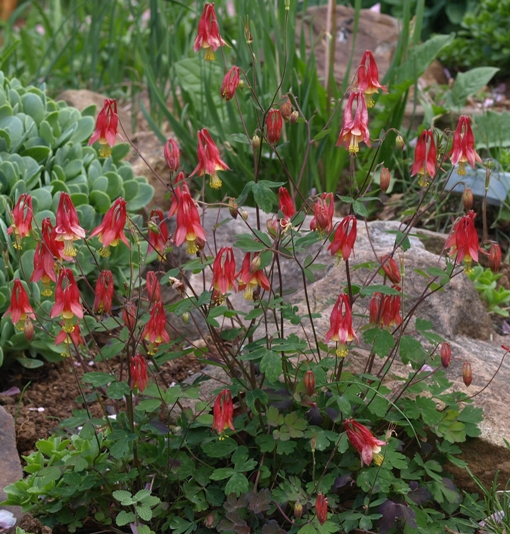
| | Fourth-year plant |
|
| Common name |
desert columbine |
| Family |
ranunculaceae |
| Life cycle |
perennial (Z6-10) |
| Flowers |
yellow/red |
| Size |
4-8" |
| Light |
sun-part shade |
From seed  |
germinate at room temperature
Flowers first year from seed sown indoors early.
detailed seed-starting info below
|
| Seed ripens | mid-June |
A columbine native to the Mojave Desert mountains. Its red-and-yellow flowers superficially resemble those of A. canadensis; the foliage is purplish gray-green, with triple-divided leaves. In their second year (the first year they bloomed) our plants were at or below the lower limit of the height range above. One survived to year three (shown below), and got a bit bigger. Then it outdid itself by getting through another season and finally attaining its full potential and height (photo above).
|
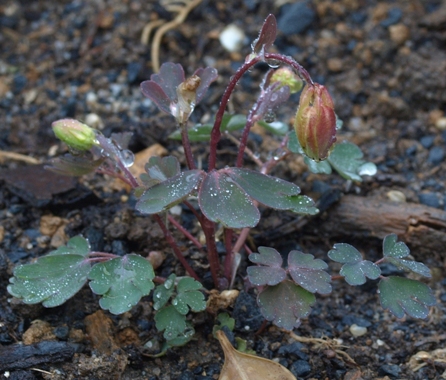
| | Promisingly budding |
|
While many aquilegias emerge with foliage colors that deviate from plain-Jane green, most of them turn green as the plants settle in for the season. This one, however, keeps its purplish color even after blooming.
|
Third-year plant, returning bigger and stronger. Just to be sure, I started some new plants from seed, because I like this species well enough to make an effort to maintain it in our garden's inventory.
|
While the shapes of the lower-growing leaves are similar to those of most other columbines, the stem leaves look a bit different, appearing in threesomes of more elongated shapes, not as deeply (or in some cases, not at all) divided.
|
We left this plant behind in our Pennsylvania garden (and wish it well); we don't grow it in Houston. Seed for this plant is included on my seed trade list One or more images of this plant are included in my stock photo catalog About my plant portraits
PlantLinks to other web pages about Aquilegia shockleyi
Visitors to this page have left the following comments| Lori Skulski | Dec 15, 2014 | Hi, Rob, Your plants appear to be A. canadensis or hybrids. You can find a description of A. shockleyi at eFlora of North America; the sepals should be perpendicular to the floral axis. There are some photos at Calflora that may be helpful to show the differences.
Lori
Thanks for the observation, Lori. I'll have to take a closer look when it's in bloom next year. I'm pretty sure it's not straight A. canadensis: I never succeed in keeping that species alive (many attempts!), while this has been fairly reliable through several generations of seed. |
- Seed from NARGS '08/'09 exchange, cold-stored through summer. Baggy 70F (89%G, 13-16d)
- Seed from '11 garden. Baggy 70F (100%G, 13-16d)
- Seed from '12 garden, cold-stored. Baggy 70F (67%G, 11-20d)
- Seed from '13 garden, cold-stored. Baggy 70F (100%G, 13-16d)
- Seed from '14 garden, cold-stored. Baggy 70F (42%G, 17-25d)
I welcome comments about my web pages; feel free to use the form below to
leave feedback about this particular page. For the benefit of other visitors
to these pages, I will list any relevant comments you leave, and if
appropriate, I will update my page to correct mis-information. Faced with an
ever-increasing onslaught of spam, I'm forced to discard any comments including
html markups. Please submit your comment as plain text. If you have a
comment about the website as a whole, please leave it in my
guestbook. If you
have a question that needs a personal response, please
e-mail me.
Last modified:
February 02, 2014
Contact me
|



